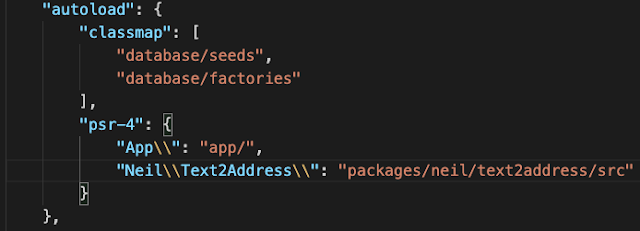[Laravel] 如何自己做套件

剛好最近公司內部有提需求,希望我自己可以把一些功能包成套件 這樣後面的人需要的話,就可以直接掛在 vendors 底下 就不需要重工了! 有鑑於此,我去看了一下 官方文件 ,好像沒有寫得很清楚 如果有人看到官方哪邊有提供,可以在底下回覆我,我會非常感謝QQ 於是乎,我跟著別人寫好的文章 1. 可以先產一個 laravel 的專案,或是用原有的專案都行,目的只是可以用指令產一些需要的檔案,比較方便 composer composer create-project laravel/laravel TestPackage 2. 在這個專案內新增一個 packages 的目錄,存放要做的套件,我這裡用 neil/text2address 當範例,先建立目錄之後,執行 composer init,初始化套件 mkdir -p packages/neil/text2address && composer init composer 範例可能會像下面 { "name": "neil/text2address", "description": "Translate text to address component of google", "license": "MIT", "authors": [ { "name": "Neil", "email": "neil@test.com" } ], "minimum-stability": "dev", "require": { "php": "^7.1", "illuminate/support": "~5.4|~6.0" }, "autoload...
